Disclaimer: The following article is based purely on my own experience. I am not a meditation expert, and I have only a rough understanding of how the brain works. I am a passionate rock climber with a daily meditation practice. Meditation has helped to improve my mental game in climbing, and I am simply sharing what I have learned with you.
Imagine, in your mind, a day out rock climbing. You’ve been working on a project just beyond the limits of your skill, and you are trying hard to push your personal envelope. Completing this route has been a goal of yours for a while now, and you finally feel that you have worked out all the moves. Long hours in the rock gym have been spent strengthening your body in the hopes that you can put down this project once and for all. Ready for the send, you tie in. With some encouragement from your belayer, you start up the rock.
You execute the opening moves effortlessly. You feel great. After all the hard work, this may be your day. As you enter the crux sequence, though, things start to go awry. The difficulty of the movement reminds you of your past experiences of flailing and failing and hanging. The pump tightens your forearms, and your palms start to sweat. You know you can do all the moves, but the discouraging thought of another failure creeps in.
Your focus begins to shift away from your goal. You begin to think more about failure, and less about the moves you need to perform. Emotions begin to well up. Disappointment, fear, and anger distract you, taking your thoughts further away from the present moment. You realize how high you are off the ground, and notice the exposure of the route. You think: “If I fall here, can I be sure that my belayer will catch me?” Fearful thoughts like these are unwanted, and unneeded. You attempt to ignore them, and push on.
In spite of the moment, you try the crux move, but you slip. You fall, and your belayer catches you. They take, and you hang there. For a few minutes, you think about those crucial moves. What went wrong, despite all your training and preparation? At this point, you may go for it again, or you may sit there and ruminate. As your belayer lowers you to the ground, you begin to feel very bad about yourself.
The Mental Game of Rock Climbing
Have you experienced this before? Chances are, you have. Many rock climbers have felt the sting of defeat as they get shot down, again and again, on their project. Their physical training regimens were not quite enough. They were missing a crucial piece of the puzzle. One that is harder to pin down, and that cannot be trained as easily as grip strength.
Rock Climbing is a sport that draws from your mental and emotional skill sets as much as it does your physical prowess. Like Martial arts, or Rodeo clowns, climbers must be able to muster quick, strategic movements that need to be completed in the face of dire physical consequences. Sometimes, a hard rock climb can feel like a game of chess. Chess that is being played high up in the air, in an environment seemingly designed to inspire stress and fear in the human heart.
A good rock climber will strive to train both their mental and physical strength. Unfortunately, one aspect is much easier to train than the other. Measuring progress in the human body is easy. Climbing grades, lifting numbers, and flexibility are yardsticks of success. Mental strength training is more elusive. It is invisible, subtle, and tricky to pin down.
The only way to measure mental strength is on the rock. When it comes down to the crux moment, you will know if your head is in the right place. Everything will feel right. A common misconception is that your head game can only be trained while high up on a rock climb. This is only partly true. Climbing will improve your mental strength, but there are a number of other exercises that can be just as beneficial.
Training the mind requires discipline and commitment. If you are not careful, you can trick yourself out of a mental training regimen. The ego likes to do that. Thankfully, training the mind can be done in minutes a day, with some very simple activities. Chief among them is meditation.
Meditation: The What, Whys, and Hows
What is meditation? That’s a loaded question, as it can take many forms. For the purposes of this article, I will define meditation as the act of sitting quietly, and observing your thoughts. More specifically, I will be focusing on a particular practice known as Mindfulness Meditation. I will be using the terms “Mindfulness” and “Meditation” interchangeably. Note that mindfulness is a form of meditation, but not all meditation is mindfulness. There are many different ways to meditate. Fortunately, most have a lot in common.
Meditation is simple in theory, and often trickier in practice. Inversely, it can seem complicated, but sitting down to do it will be simple. It is deceptively simple, yet surprisingly tricky. Or not. I will try to give you a solid idea of what the practice is. What I cannot promise is that I can convey, with the best of my writing abilities, what your personal experience will be like. There are authors and instructors who will do a much better job explaining meditation to you, and I will point you to those resources at the end of this article.
What I can do is give you an example of a short and very basic meditation practice. You don’t need to do a lot to meditate. Rather, it is better described as an act of not doing much at all. It may seem strange, but learning how to truly do nothing will make you better at doing other things.
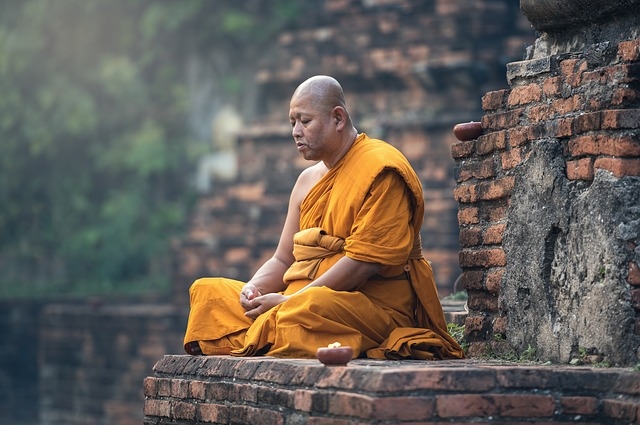
How To Meditate
The following is a simple meditation exercise. Follow a few easy steps, and you will have meditated. Just try it. They will take you 1 minute to complete.
- Find a quiet place, where you’re not likely to be disturbed.
- Sit down, cross legged. A cushion will make you more comfortable.
- Close your eyes.
- Take a deep breathe.
- Concentrate on your breathe.
- Open your eyes.
Congratulations! You have just completed a meditation session. That wasn’t so hard, was it?
That’s really all that it takes to meditate. You don’t need to do anything else, if you don’t feel like it. To make a habit out of it, just repeat those steps every day. The time you need to devote to daily meditation can be measured in minutes, and you don’t need any special equipment. Just sit down, and do it.
Truthfully, most forms of meditation will be a bit more in depth than these six steps. Your practice will become a little more difficult when you decide to extend your sessions. The goal is to focus on your breath, and to experience the physical sensations as your body settles into it’s sitting position.
Your Mind Will Wander
The first thing you will notice as you begin to meditate, is that your mind will go all over the place. You will begin to think about anything and everything, and most of it will have nothing to do with the present moment. You will think about your dinner plans, a route you really want to climb, a bill you need to pay, and everything in between. At this point, many people begin to think that they are doing it wrong. They may get discouraged, and decide to leave this meditation business to the monks.
Beginners need to understand that this is *supposed to happen.* It is perfectly natural for the mind to do this. The benefits of meditation come when you bring your attention back to your breath, and to your bodily sensations. Throw out any preconceptions about clearing your mind, reaching a “zen” state, or other hollywood buzz words. The point is to understand that you will have all of these thoughts all the time, but to not let yourself get caught up in them.
The more that you bring your thoughts back to your body, the better you will be able to control your thoughts and reactions. This action has often been called a “bicep curl for your brain”.
Be nice to yourself. A common mistake is to chastise yourself when you notice your mind begin to wander. Don’t worry about it. Rather, recognise that your mind is conditioned to wander every which way. Bring your thoughts back to your breathing, and gently accept them. Look at them objectively, and let them go. Doing this over and over is a part of the process, and will strengthen your mind.
Meditation is Simple
Since the first person began to sit quietly in a room, humanity has taken the concept of meditation, and run with it. Over the course of the ages, an untold number of practices and methods have emerged. Originating from religious and cultural traditions the world over, you’ll find practices with names that are hard to pronounce, and methods that seem strange. To a beginner, it is important to be able to sort through them all.
Really, most practices can be boiled down to a few simple tenants. You sit quietly in a room, close your eyes, and observe your thoughts. That’s all that I do, and it is all you need. I meditate for ten minutes a day (20, if I’m feeling particularly disciplined), and it has worked well. Some people like to add in music, incense, chanting, or other accessories. For me, I like to keep it simple.
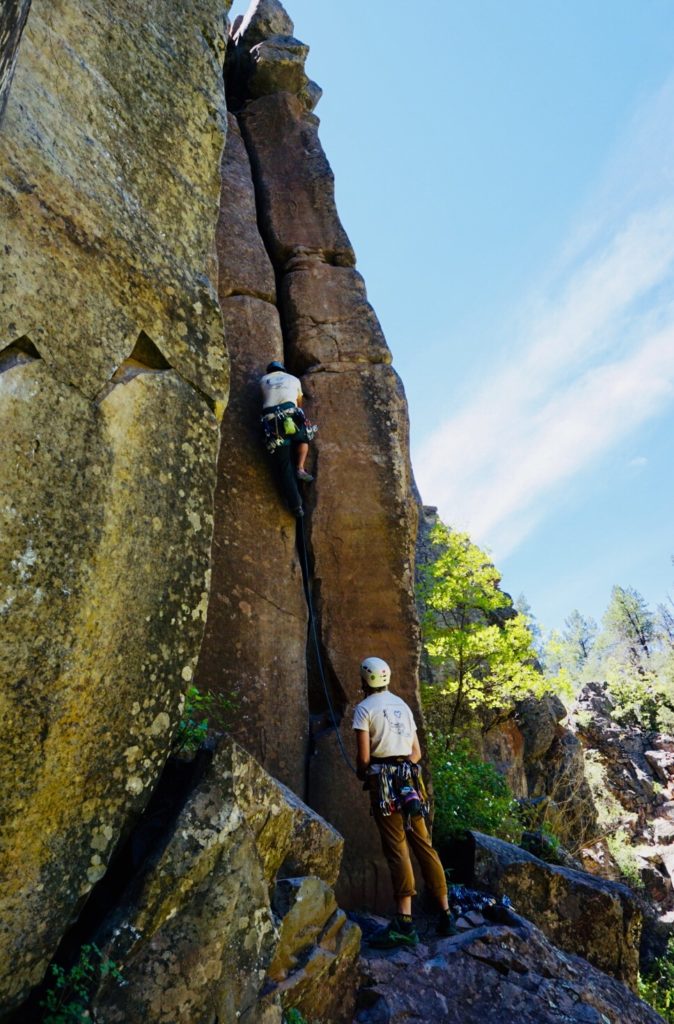
Meditation is Secular
Meditation, or any activity often called Meditation, holds some stigma. To many, it is associated with “Woo”, which has the tendency to turn folks off to it. It is a term that conjures images of the dreadlocked, patchouli wearers who want to tell you all about their healing crystals. Either that, or bald monks holed up in a monastery. If that’s what you’re into, then cool. I am no one to judge. But, it is a stereotype that keeps many in the mainstream from giving meditation an earnest look.
When it comes down to it, a basic meditation practice does not need to be packaged with any spiritual or new age beliefs. By itself, the act of quietly paying attention to your thoughts is not inherently religious. It can be performed by anyone, anywhere, regardless of religious or cultural background.
Famed News Anchor, Podcaster, and Meditator Dan Harris summarizes it well on his website:
“Just in case you’re worried, meditation does not require a lot of the things people fear it might. For example, you don’t have to sit in a funny position. (Unless you want to, of course.) You also don’t have to: light incense, chant, or believe in anything in particular. There’s nothing to join, no special outfits to wear.”
Granted, this quote is from a webpage designed to get you to download a meditation app, but his point stands. You don’t need to do any special rituals or believe in any higher power. If you do subscribe to any religious doctrines, meditation is still an activity that can be performed separately from your beliefs, if you’d like it to be. At this point in my life, I am not religious. If I ever was to become religious, then I may weave meditation into my spiritual practice. For now, it is a purely secular activity that benefits me in many ways, particularly my rock climbing.
Benefits of Meditation
Regular meditation can impart many benefits. It is incredibly healthy for the mind by helping to reduce stress, strengthen focus, and increase general well being. Meditation has only just began to catch on in the west, but more and more people are beginning to realize the wealth of benefits it provides. By far, I am a much more productive, focused, and thoughtful person. I feel that these benefits can be attributed to my mindfulness practice.
Everyone has a different reason for meditating. Some use it as a means to deal with stress and anxiety, or maybe as a part of their spiritual beliefs. My practice started when I decided that I wanted to better myself. It has helped me to be a better student, a better blogger, and a better climber. Meditation is not, and should never be, touted as a magic remedy for life’s ills. Think of it more as a means of building a solid mental and emotional foundation from which you can start to work through your problems. Practice and effects may be different for every person. Your mileage may vary.
It doesn’t take a lot to see some changes. There are daily mindfulness exercises that take seconds to do, but allow the same, calm feeling. The simple one that I outlined is one such drill. The most important thing is not the length of the exercise, but the repetition. They need to be performed regularly. Meditation will help you, but only if you commit to a routine.
Here’s an example. Think of your mind as a puppy. Puppies like to run around everywhere, sniffing and licking everything. They are full of energy. To train your puppy, you will pick it up, put it down, and tell it to stay. Almost immediately, the puppy will resume running around. Again, you pick up the puppy, and tell it to stay. Every time you do this, your puppy learns to sit and stay just a little longer. Soon, the puppy will sit obediently for as long as you ask it to.
When you meditate, your thoughts are like the puppy. They will go everywhere. Instead of getting upset, pick up your puppy, and put it back where it needs to be. Before you know it, your puppy mind will become tamed. The more you meditate, the better you will become at training the mind.

Meditation and Focus
Of all the reasons that I use to justify my mindfulness practice, improving my focus is at the top of the list. Beginning in Elementary School, and lasting all the way through college, I have always struggled with maintaining focus. Classroom lectures could never hold my attention. My mind would frequently wander away from the present moment.
It was not ADHD, or a learning disorder. School just bored me. That, and a lack of personal discipline. It was not until I discovered mindfulness that that I began to improve my attention span. Meditation has a way of cultivating discipline and focus. Regularly sitting alone to do nothing will have that effect on anyone.
The ability to focus is something that I have sought for a long time. It has taken work, but meditation has trained this skill. I can now sit still and work on a task for a much longer period of time, and I probably would not have been able to devote as much time and energy to this blog without it. I have trained the puppy in my head to sit still for longer, but I have not yet harnessed the laser precision focus. That will take more work, but I am well on my way to being a much more productive, healthier person.
For rock climbers, the ability to focus is huge. In my most trying moments on the rock, maintaining focus has been critical to success. I am so easily distracted, especially after getting shot down a few times. When your arms ache, and your mind is tired, focus will help you push through the route. You can’t be thinking about dinner, or whether your belayer is checking out your butt. Instead, your objective should be to reach the flow state. Meditation will train focus, which is a key ingredient necessary to entering flow.
For more insight on how meditation can train focus, check out this article.
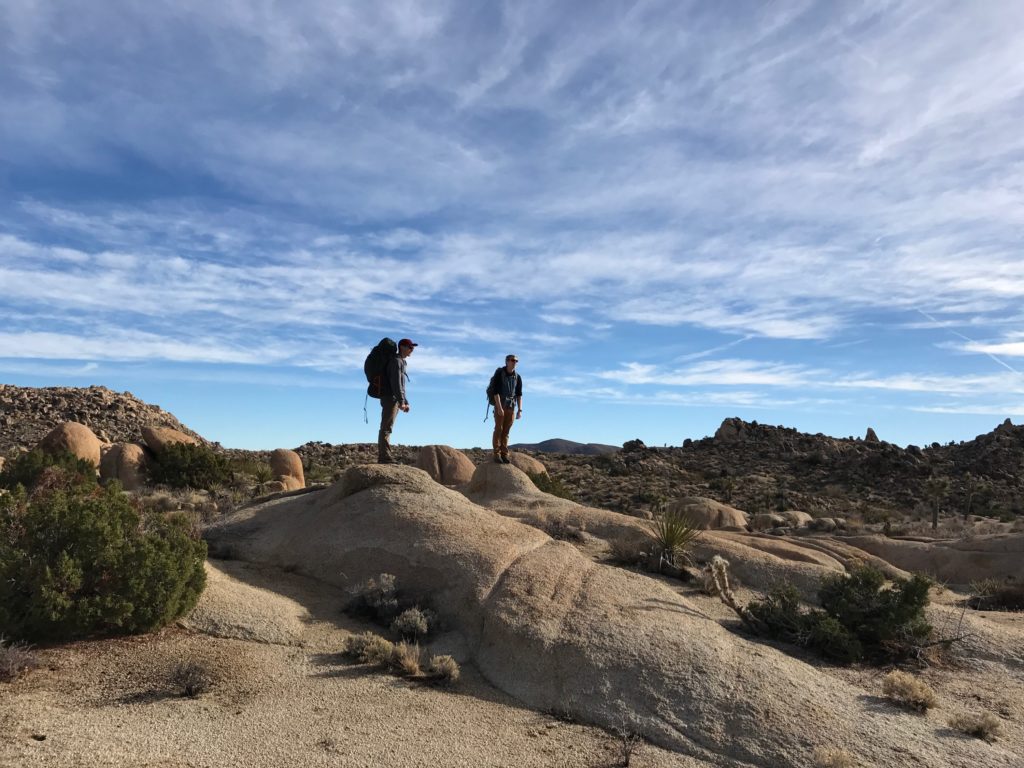
Control Your Mind with Breathing and Biofeedback Loops
I keep mentioning control. Control of thoughts and emotions and conscious reaction to stimuli. But what exactly do I mean? When I mention control, how is control initiated?
One method that I have been able to train is to better moderate my breathing. My method of meditation centers on my breath work. When my mind gets too distracted, I will bring my focus back to my breathing. This method of breathing allows me to step away from my thoughts, and instead focus on my most basic, physical sensations. More importantly, I can initiate a biofeedback loop.
I first learned about biofeedback loops from an anatomy professor. The class was studying the nervous system, and the autonomic reactions that our body has to certain stimuli. When presented with stressful situations, the human body will often initiate common signs of fear and distress, such as increased heart rate, and sweaty palms. These reactions are distracting, and usually unwanted.
My professor mentioned that many people with extreme anxiety issues have used mindfulness therapy as a means to handle their episodes. When they feel an anxiety attack coming on, meditation can be used to lessen, or altogether thwart the attack. They have been able to train their brains to initiate a conscious override of their autonomic nervous system. Meditation had allowed these people to take back control of their life.
For the average person, gaining control of biofeedback loops can grant many perks. For one, you may find that something as simple as your breath can ground you. When you sense that you are feeling carried away by your emotions, activating biofeedback loops will remind your brain of a calmer, baseline state. Heightened feelings of stress can be removed, allowing yourself a chance to deal with situations more logically. I have used biofeedback at school, at work, in traffic, and anywhere else. It is an incredible asset for rock climbers. Developing this power is possibly attributable to physical changes that meditation can create within the human brain, particularly in the amygdala.
Physical Changes- The Amygdala, and Your Emotions

An interesting effect of meditation is how continued, regular practice may be able to impart physical changes within the human brain, many of which are beneficial to rock climbers. Buried deep in the brain is an area called the Limbic System, which is the center responsible for regulating both emotional control, and short term memory. The Amygdala is the portion responsible for emotional control. The degree to which emotions are regulated corresponds with the size of the Amygdala. A larger amygdala may correlate with experiencing strong emotions, while a smaller one suggests that emotional output is more readily controlled.
The Amygdala can affect all sorts of human behaviors and personality traits. Research suggests that alcoholism, social interaction, and even political orientation can all have roots in the amygdala. A common preconception is that our day to day emotional responses are ingrained. In the “nature vs. nurture” argument, many lean towards the nature side, in that our emotions and feelings are born into us. There is probably some truth to this, but that doesn’t mean that the brain cannot be trained to better regulate emotional response.
By way of meditation, the size and function of the Amygdala can be changed to facilitate better emotional control. Research has shown that regular meditation can lead to a decrease in the size of the Amygdala, while promoting growth in the prefrontal cortex. The prefrontal cortex being the portion of the cerebrum that controls cognition, logic, and problem solving. In short, a meditators brain will draw a more distinct line between logical problem solving, and emotion.
The Amygdala, Meditation, and Rock Climbing
So, how does the Amygdala play into your rock climbing? Well, among the many emotions that are regulated, the Amygdala controls your fear responses, and will signal your brain to react to fearful stimuli accordingly. By activating the sympathetic nervous system, you will begin to experience anxiousness, a faster heart rate, and increased sweating. You know those intense feelings of fear, horror, and dread that you sometimes experience up on the cliff side? You can thank your amygdala for that.
Theoretically, a rock climber with a well trained amygdala will gain a lot in the mental fortitude department. The connection between the limbic system and rock climbing is nothing new. Alex Honnold, the free soloist best known for his daring solo ascents of hard big wall routes, underwent an fMRI scan of his brain. Honnold’s astounding ability to maintain his mental coolness is both revered, and puzzling. The fMRI showed that while Honnold has a well developed, functioning amygdala, it did not exhibit a lot of activity. When presented with a series of gruesome images, his amygdala activated far less often than that of other healthy, grown adults.
These findings may suggest that either a) there are deeper factors affecting Honnold’s emotional centers, or b) other parts of his brain, like his prefrontal cortex, are developed enough to override his amygdala. Personally, I like to think that the latter is true.
Whether or not his amygdala is the secret to Honnold’s solo ascents remains to be seen. For the average joe climber (read: me), the concept of altering my own brain to make me a better climber is really darn cool. It lends some scientific credibility to my own mindfulness practice.
How Meditation makes you a Better Rock Climber
So far, we’ve established that Meditation is good for you. It can impart many benefits by way of changing your mindset, giving you greater control over your emotions, and even (maybe) altering the physical structure of your brain. Most of these benefits are applied in the context of everyday life. This brings us to the question-how does meditation meditation make you a better rock climber?
To better answer this question, I’m going to make an analogy to sports training-something that many rock climbers are familiar with. In this example, let’s picture a rock climbing training routine. The conventional wisdom is that the best way to train for climbing, is simply to keep rock climbing. This holds true, up to a point. Climbers looking to progress faster, or break a plateau will incorporate workouts into their training. Lifting weights, hangboarding, and stretching do not resemble climbing, yet condition the body to create climbing gains.
Similarly, meditation is not a specific mental exercise. It is holistic conditioning for the mind. Meditation taps into subtle mental processes that we are not always aware of, and allows us conscious control of our thoughts and actions. We can progress our climbing by seeking the focus, calm, and discipline that meditation provides. In this way, the mental power that can be gained from meditation is analogous to the strength gains made in the gym.
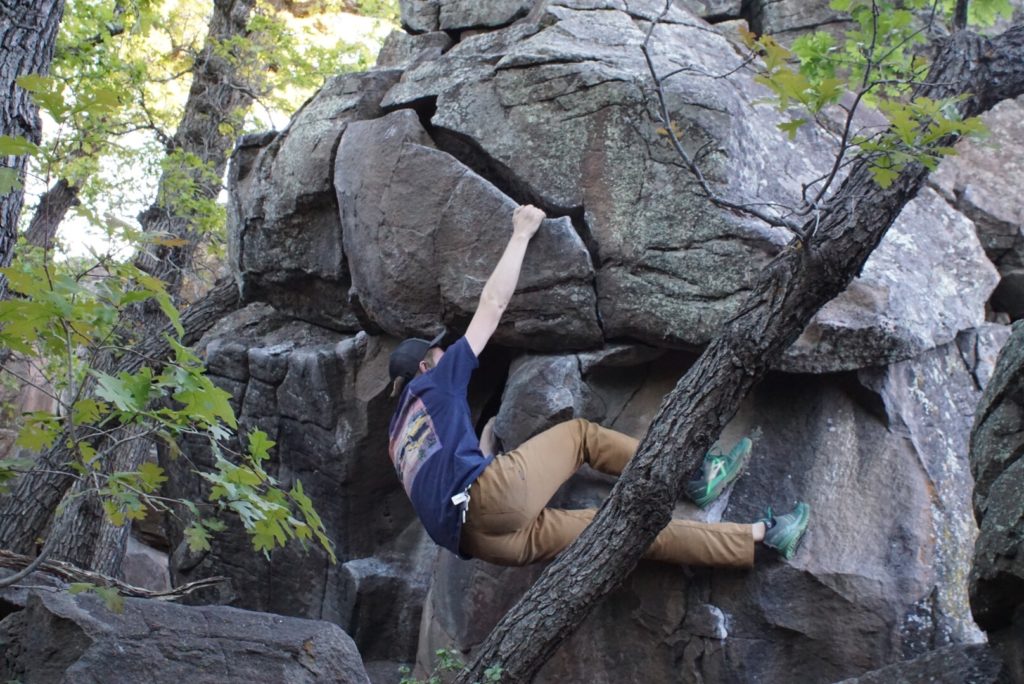
Managing Fear
Rock climbing is a scary sport. Human beings were not meant to be clinging to a cliffside. We’re supposed to be on the ground, eating fruit and doing taxes. In a climber’s most desperate moments, they will curse the day that someone decided it would be a good idea to try anything otherwise. Up there, trying to grab tiny holds while trying not to think about the effects of gravity, the prevailing emotion is often fear. Primal, all consuming fear.
Despite modern safety technology and techniques removing many of the risk factors from rock climbing, our basic instincts will still take hold. We will still feel fear creep in, and we may begin to doubt ourselves when confronted with the extreme nature of rock climbing (I use the term “extreme” lightly.). A good climber will experience fear, and push through anyway. The best climbers will be able to identify the moment when they begin to experience fear, and take steps to properly manage it. They will be able to hold fear at bay during the most crucial moments.
Fear will always be present during rock climbing. In my experience, the longer I have climbed, the better I am at ignoring fear. Up to a point, I was able to better tolerate “low” levels of fear and stress. This parallelled my physical climbing skill. As I became more used to easier grades, I became far more comfortable climbing in that grade range. Still, I found myself struggling. Too often, I would yell “Take!” when the climb got too hard, or I when I would get just a little too high above the last bolt.
Meditation and Fear
Meditation is a great tool to help a rock climber manage fear. We often tell ourselves that fear is all in our heads. As FDR once famously said: “The Only Thing We Have to Fear Is Fear Itself”. Everyone knows that Roosevelt’s famous quote is true. Fear really is just in our heads. The obstacles we face don’t need to inspire fear. Fear and stress are emotions that we create for ourselves. We’re not always to blame. For all of our lives, we have been conditioned to create negative responses.
The thing is, most people don’t really understand this. We can repeat it day after day, but to internalize it is another thing entirely. Being afraid is a normal part of life. It is a survival instinct, and is quite useful for helping us to avoid dangerous situations. Most people (myself included) let fear guide most of their decisions. It takes the controls as a driving force in our lives, causing us to be avoidant of our problems, and to steer away from challenge.
Meditation will help you separate feelings of fear, from yourself. If you are feeling scared, then take a small step back, and observe your body. You may find that you are in no real danger, and that it is all in your head. Meditation will allow you to gain this useful perspective. Once you can identify fear, then you can manage it. Once you can manage it, then you can work around it.

To Be Present, You Must Breathe
Recall how I briefly mentioned biofeedback loops. When I was feeling stressed, breath work helped me to step away from those emotions. I could then focus on the present moment, and look at problems without my emotions clouding up my perspective. I have been able to harness biofeedback loops to help me concentrate on the route I am climbing, while better managing the feelings of fear, uncertainty, and failure that often cause me to give up.
Breathing is an automatic action of our bodies. We can consciously control it, even stop it momentarily. Yet, no matter your efforts, the basic life support functions of your brain will take over. You will resume breathing, consciously or not. In meditation, maintaining focus on your breath creates an anchor point from which you can observe your thoughts.
Breathing is an act that is natural and ingrained enough as to provide a sense of familiarity. Breathing mimics how we feel. When feeling calm, you breathe normally. Feeling stressed, and you may quicken your breathing. I often find that I hold my breathe when I rock climb, especially during a challenging movement. The act of holding my breath primes my mind to anticipate failure, making it more likely that I will take a rest when I do not really need too. Actively breathing keeps my mind present, aware, and focused. For further reading, check out some of the research that has been done on the relationship between breathing, and concentration.
The Rock Warrior’s Way, and Arno Ilgner
“When You Climb, Climb. When You Rest, Rest”
If I’ve sparked your interest, and you want to begin meditating to improve your rock climbing performance, then the teachings of Arno Ilgner are a great place to start. Arno Ilgner is a long time rock climber who has dedicated his time to helping climbers improve their mental performance on the rock. For years now, his book The Rock Warrior’s Way has been read by climbers the world over. Beginners and professional climbers alike have used it’s teaching to improve their performance by helping them to stay in the moment, and to manage fear.
Nowadays, the Warrior’s Way Training Program is a trusted fount of knowledge. Having read the book, and participated in one of Arno’s commitment clinics, the practice of meditation is not explicitly stated to be an exercise for improving a rock climber’s head game. Rather, many of the activities and exercises outlined in the Warrior’s Way are very similar to meditation techniques, and often have similar aims.
The Warrior’s Way stresses the importance of staying present in the moment. Many of the exercises resemble a moving meditation, wherein the climber pays more attention to what they are doing in order to develop focus. Practical mindfulness principles are applied, and framed in a rock climber’s mindset.
In my mind, these training techniques make a lot of sense. You don’t need to know anything about meditation or mindfulness to understand them. You only need to be a rock climber familiar with many of the common mental obstacles in our sport.
I first started reading The Rock Warrior’s Way long before I began meditating. It wasn’t until I started practicing mindfulness that I realized the strong overlap between the book, and meditation principles. Learning is a valuable tool, and it will become obvious just how much these lessons can be applied beyond rock climbing. Ilgner’s work can help anyone acquire the mental stratagems needed to accomplish difficult endeavors in life. I cannot say that this book inspired me to begin meditating, but it planted the seeds.
A Warrior’s Way clinics comes highly recommended. Taught by Arno, and/or a number of certified Warrior’s Way instructors, the clinics will lay down some basic principles of mental rock climbing training. You will be taught simple exercises to help improve your focus and awareness, as well as learning how to take safe lead falls. Clinics are held in gyms, or at outdoor crags throughout the country. Most instructors are based in the United States, but the Warrior’s Way is spreading internationally. I took one a few years ago, and I felt it to be very beneficial, both to confront my fear of falling, and to learn to climb with a more mindful process.
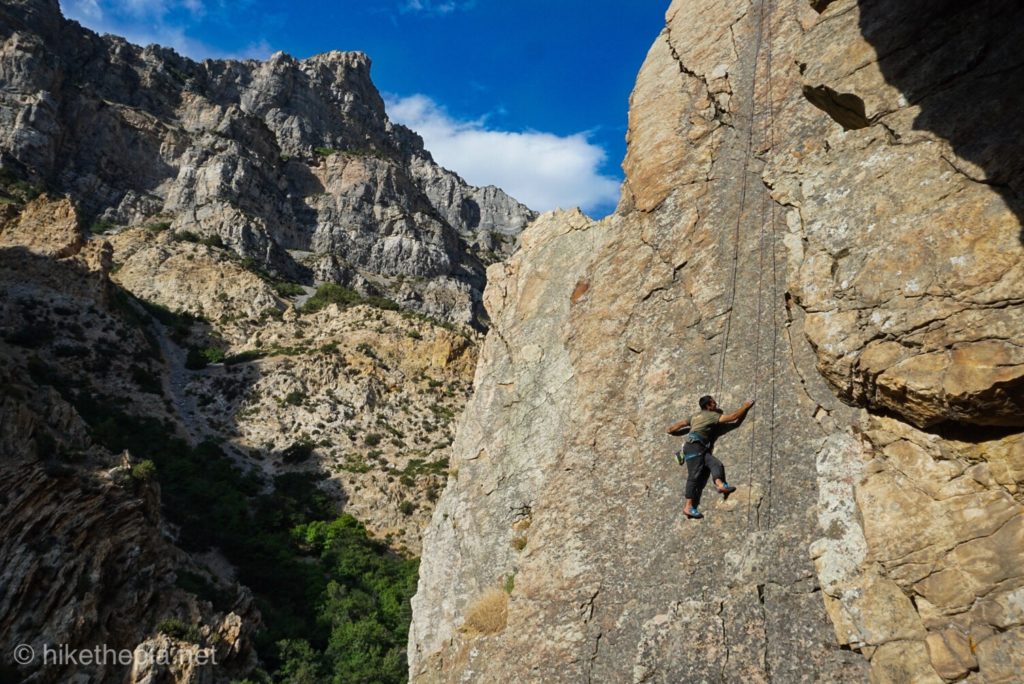
Recommended Books for Meditation and Mental Training
Meditation and Mental Training are dense topics. There is much to uncover and explore, most of which can’t possibly fit into one blog post. Luckily, hundreds, if not thousands of books have been written that will go more in depth into these subjects. These authors are much better versed than I am, and reading these books will help you to learn more about the mind. If I have piqued your interest, then check out the following list. It is a few books that I have used to further my mental training, and to learn more about meditation.
The Rock Warrior’s Way-Arno Ilgner
Ilgner’s seminal book The Rock Warrior’s Way comes as a recommended read for all climbers. This book lays out many of the mental pitfalls and obstacles that climbers face, both on and off the rock. With a clear voice carried through easy reading experience, this book identifies the numerous ways that we sabotage our climbing experience to hold back our potential. Ilgner presents concrete methods that can help us to overcome these shortcomings, and to find success when the moment calls for it.
Warrior’s Way frames common climber dilemmas as a result of mindset. This book will show you how to shift your perspective from one of struggle to a mindset that promotes growth and development.
Espresso Lessons: From The Rock Warrior’s Way-Arno Ilgner
Where Warrior’s Way focuses on theory, Espresso Lessons takes key principles, and boils them down to actionable drills that can be performed in the gym, or on the rock. It is a much shorter read, and is more suited for climbers who have a busy schedule. Espresso Lessons work as a stand alone book, or as a companion piece to other Warrior’s Way literature and training programs. Either way, this book will teach you the techniques needed to make Ilgner’s training philosophy stick.
Mindfulness in Plain English-Henepola Gunaratana
Mindfulness in Plain English is exactly what it sounds like. It takes the principles of mindfulness, and presents them in a concise , understandable format. Since it was first published, Mindfulness in Plain English has been praised as a definitive, introductory guide to mindfulness meditation. With wit and grace, this book will tell you everything you need to know about to begin your practice. The teachings are presented in a secular way, carefully avoiding many of the terms and concepts that may cloud one’s understanding of meditation.
This book is an easy read, and one that is sure to make you a regular, productive meditator. The basics, the benefits, and the common obstacles are all laid out to inspire your meditation practice.
Waking Up: A Guide to Spirituality Without Religion- Sam Harris
Sam Harris has been making waves. He is a successful author, and intellectual, and in recent years, his podcast Waking Up with Sam Harris has become one of the most popular around. His podcast would not be if not for his book Waking Up: A Guide to Spirituality Without Religion.
In Waking Up, Harris makes the case that meditation is an exercise that every person should be taking part in. Using evidence from modern scientific research, Harris shows that meditation is hugely beneficial for the brain, and society as a whole. The case is also made that meditation is a practice that can cultivate personal spiritual growth, without an attached religion.
Waking Up is a great read. It raises some important questions about the world we live in. Save it for quiet, post climb campfires.
Meditation for Fidgety Skeptics: A 10% Happier How to Book-Dan Harris and Jeffrey Warren
Written by ABC News Anchor and meditator Dan Harris (I quoted him earlier), and Canadian Journalist/Meditation Teacher Jeffrey Warren is Meditation for Fidgety Skeptics: A 10% Happier How To Book. This is not a book for the long time meditators living on mountain tops. Instead, Harris and Warren wrote this book for the rest of us.
Fidgety Skeptics seeks to clear many of the myths and misconceptions surrounding meditation. It is not just for the new age crowd, and you don’t need to devote hours and hours of your time to learning meditation. Instead, meditation is shown as a simple activity that can be performed in seconds. Even the most Type-A, driven person on the planet can fit a little meditation into their day, and this book shows just how easy it is.
I recommend this book for folks who are skeptical about the benefits of meditation, and are wary of the stigmas often attached to it. This book pairs well with the 10% Happier Podcast, where you can tune in to listen to Harris’ smooth Baritone interview all sorts of interesting people about their meditation practices.
Conclusion-Why You Should Consider Meditation
In spite of what I have told you, the best way to learn how to meditate is to just try it. You can start with a simple mindfulness exercise. If you like that, you can explore your own practice. Challenge yourself to sit longer, and try out other types of meditation. There is no one-size-fits-all method.
To truly find the benefits of meditation, you must remember two things:
- Repetition is key.
- Be patient
Meditation is not easy, but it’s not hard either. You don’t need to sit quietly every single day, just on *most* days. Take a few minutes, close your eyes, and simply take notice. Your breathing and your body is always present. Remember this, and you can always bring your attention back. It calms the mind, and helps you focus. Learn to develop this ability, and you have just unlocked a rock climbing super power.
Starting off, the beginning meditator may not immediately find the mental benefits. Do not get discouraged. Your short term goals should not be to seek reward. Instead, just sit and take notice. This will turn out to be an award in itself.
Anyways, I hope that I have been able to convince you of the merits of meditation. It will yield bounties to rock climbers, both on and off the rock. If not, then that is fine too. Meditation is probably not for everyone. Still, it has given me great control over my thoughts and emotions, and has allowed me to cultivate a healthier, mindful climbing experience.
A big thanks to all who contributed to this topic that I posted on mountain project. Besides some expected internet message board flaming, the comments on this thread helped to inform some of my research for this post. Thanks, Mountain Project!

- The Best Campsites Around Big Bear California - February 26, 2021
- Hiking to the Hollywood Sign Via the Brush Canyon Trail - July 13, 2020
- Dirt Cheap Hiking and Backpacking Gear: The Most Affordable Gear on the Internet - July 4, 2020
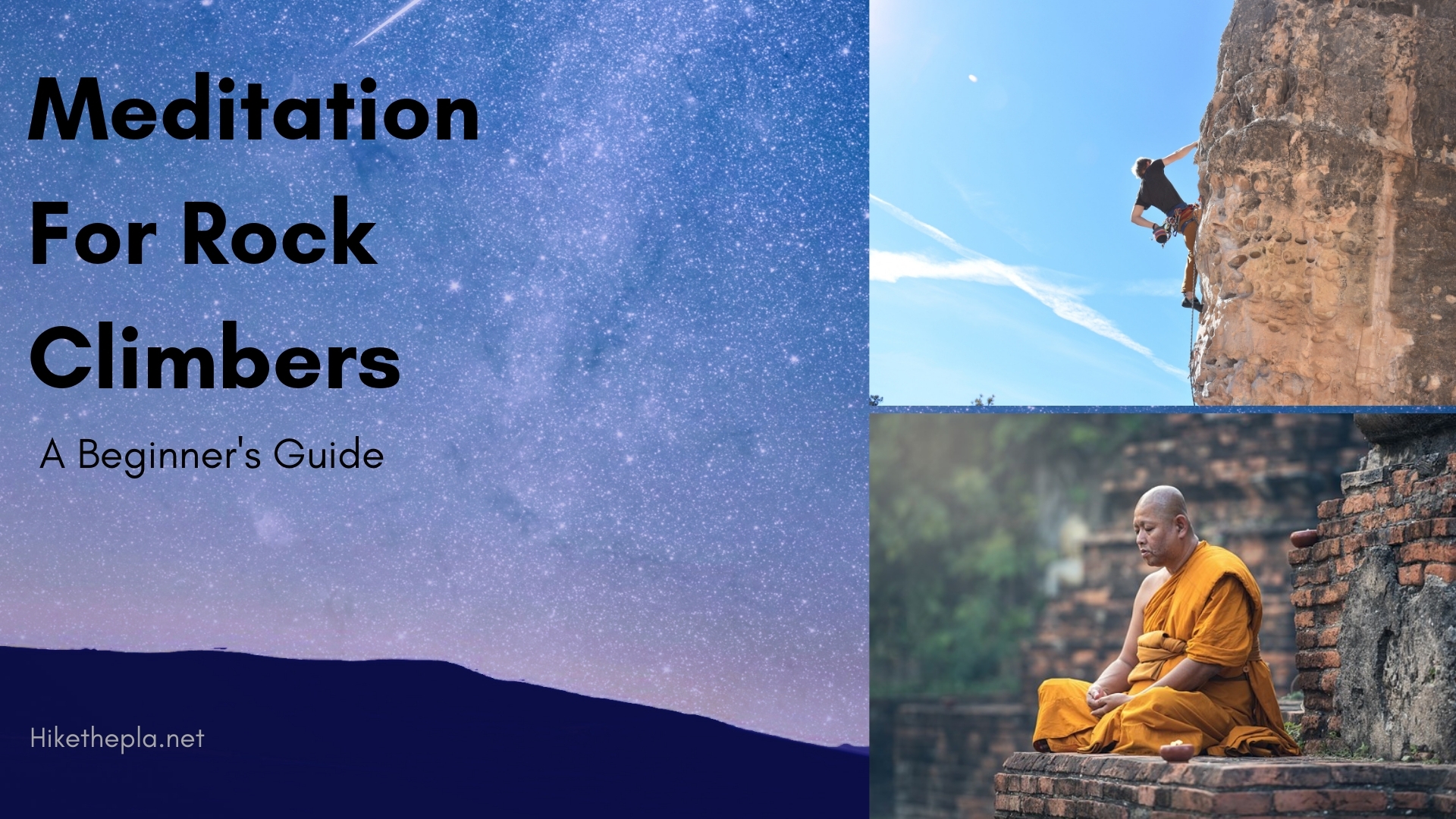
So mindfulness is really a method to learn self-discipline? Is it a way on concentrating on what is important in the moment as well as in your life?